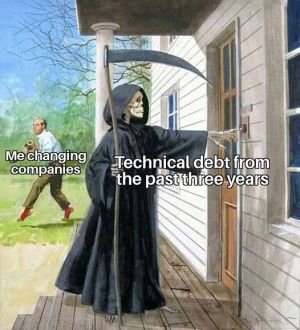Technical Debt
Technical Debt: The Silent Killer of Software Projects
Technical debt, a term coined by Ward Cunningham, refers to the implied cost of future rework caused by choosing an easy (quick) solution now instead of using a better approach that would take longer. For solo developers, this debt can be particularly burdensome, as they often wear multiple hats and may prioritize short-term gains over long-term sustainability.
Consider the scenario of a PHP 5.x application in need of a major overhaul. The developer faces a critical decision: continue patching the old code or embark on a time-consuming rewrite. While the former might seem like the quickest solution, it accumulates technical debt, making future maintenance and updates increasingly challenging.
Migrating to a modern framework like Laravel offers the promise of cleaner code, better performance, and enhanced security. However, the process of porting existing code can be arduous and time-consuming. It's akin to uprooting a mature tree and repotting it, hoping to preserve its essence while adapting to new soil.
Moreover, the rapid evolution of programming languages adds another layer of complexity. By the time a developer finishes migrating to Laravel 8, a newer version, such as Laravel 9 or 10, might already be available. This constant cycle of upgrades can be overwhelming and resource-intensive.

To manage technical debt effectively, developers must strike a balance between short-term expediency and long-term sustainability. This involves:
- Prioritizing Refactoring: Regularly allocating time for code improvements can prevent the accumulation of technical debt.
- Adopting Modern Development Practices: Using version control, code reviews, and automated testing can help maintain code quality.
- Staying Updated with Technology Trends: Keeping abreast of the latest tools and frameworks can minimize the impact of future migrations.
While technical debt is an inevitable part of software development, understanding its consequences and implementing proactive strategies can help developers avoid being overwhelmed by the weight of their past coding decisions.
By embracing a disciplined approach to code maintenance and modernization, developers can ensure that their projects remain viable and adaptable to the ever-changing technological landscape.
